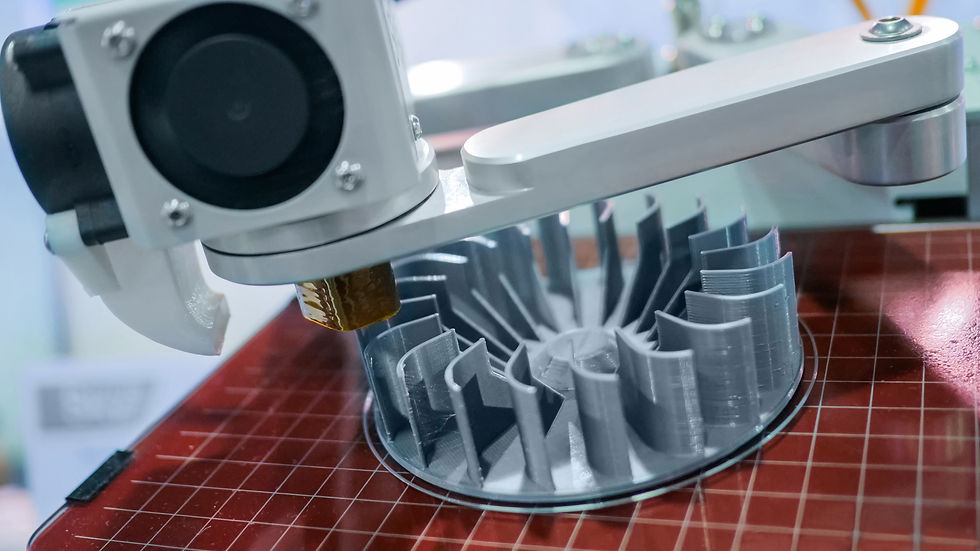Troubleshooting Wireless Charging: A Guide on How to Use Wireless Chargers Effectively
- Dylan Brubacher
- Apr 19
- 3 min read
Wireless charging has become a staple for modern tech lovers looking to ditch messy cables and enjoy the convenience of simply placing their device down to power up. But even the sleekest tech has its hiccups. Whether your device isn’t charging at all or charges slowly, knowing how to use wireless chargers effectively and how to fix common issues can save time and frustration.
In this article, we’ll walk you through troubleshooting wireless charging problems, along with a section for basic troubleshooting steps anyone can follow.
Common Wireless Charging Issues and Fixes
Even though wireless charging is designed to be simple and hassle-free, a few things can get in the way. Here are some of the most common issues and how to troubleshoot them.
1. Device Not Charging at All
Possible Causes:
Phone is not properly aligned with the charging coil
Incompatible device or charger
Case too thick or made of interfering materials (metal, magnets)
Power supply not delivering enough power
Fix:
Make sure your device is centered on the charging pad
Double-check that your device has wireless charging capability
Remove your phone case and test again
Try a different power adapter or cable
2. Slow Charging
Possible Causes:
Using a low-output power adapter
Background apps draining battery
Misalignment on the charger
Fix:
Use the recommended wall adapter for your wireless charger
Close background apps and screen during charging
Reposition the device for optimal alignment
3. Charger Gets Hot
Possible Causes:
Poor ventilation around the charger
Faulty charger or cable
Device overheating during charge
Fix:
Ensure there’s adequate airflow around the charger
Ensure you are using the recommended cable and wall adapter, and that your cable is not damaged
Avoid using the device heavily while it’s charging
4. Intermittent Charging or Disconnecting
Possible Causes:
Loose power connection
Foreign objects between the phone and charger
Charger pad or phone surface is dirty
Fix:
Check and secure all cable connections
Remove any metal objects or cards near the phone or pad
Clean the charging surface with a microfiber cloth
Basic Troubleshooting Steps for Wireless Charging
If you're experiencing issues and aren’t sure where to start, try these basic steps:
✅ Step 1: Confirm Device Compatibility
Make sure your phone supports Qi wireless charging (the standard used by most devices). Not all phones have this feature built-in.
✅ Step 2: Inspect the Power Supply
Use a compatible power adapter with the recommended wattage for your wireless charger. Avoid cheap, unbranded chargers that might underperform. Ensure that your cable is not damaged.
✅ Step 3: Check Phone Case
Remove the case and try charging again. Some cases (especially with magnets, metal, or thickness over 3mm) can interfere with charging.
✅ Step 4: Reposition the Device
Devices capable of wireless charging don't always have their receiving coil centered on the phone. Look up your specific device to find out where its coil is located. Common coil locations are show in the image below. Align your phones receiving coil with the center of the charging pad. Wireless charging relies on coil alignment—being off by just a bit can disrupt power transfer.

✅ Step 5: Clean Surfaces
Dust, grime, or even fingerprints can interfere with charging. Gently clean both your device and the charging pad using a dry, soft cloth.
✅ Step 6: Restart Your Phone
Sometimes, a quick reboot can resolve software glitches that impact charging recognition.
✅ Step 7: Try a Different Charger
To rule out hardware failure, test your phone on a different wireless charger or test your charger with another compatible device.
How to Use Wireless Chargers Effectively
Learning how to use wireless chargers effectively means understanding how they work—and what can go wrong. By keeping your device aligned, using quality components, and taking time to troubleshoot wireless charging issues, you’ll get the most from your setup.
If you're still having problems, it may be time to contact the manufacturer or look into a replacement pad that offers better compatibility with your phone model.
.png)


